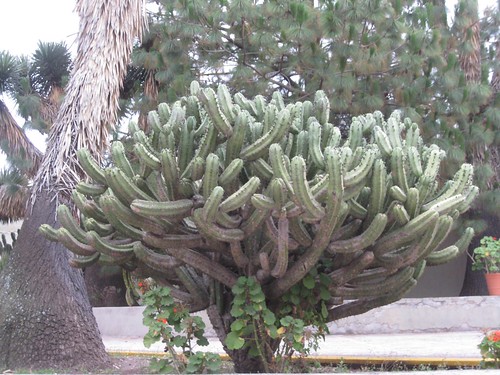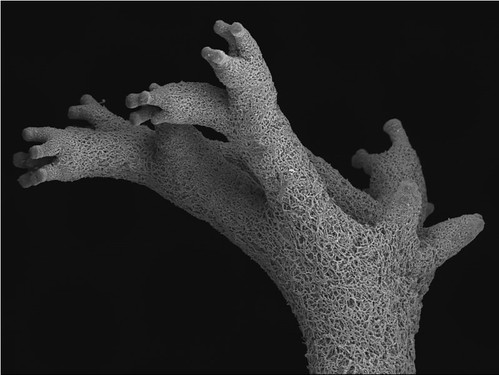
I shouldn't have been surprised but I was. The deconstruction of Linnean taxonomy led to a different set of formalities as scientists began shaping their classification systems in the "new" bottle of cladistics, a formalistic, mathematically based system devised in the 1950s by the German entomologist Willi Hennig. As we struggled to master this new style of taxonomy we were driven by an almost messianic belief that the New Phylogeny would revivify botany, adding relevance, attracting funding, and polishing up our dusty self-perception. Finally we would pull ourselves off the bookish piles and creaking cabinets and join with pride the new Computer Age. By deconstructing Linnean teleology I wonder, were we forcing ourselves into a new teleology?
Cladistics transformed botany but not, I think, in a positive way. Hot on the heels of hennegian systematics followed dizzying heights of New Technology as research teams and institutions sought to outdo one another vying for equipment, superstar faculty, and an ever dwindling pool of graduate students. Botany, which had shaped itself as a syncretic, literate, broad-based study of nature joined post-modern academia in a narrow minded, reductionist, exclusionary approach. Molecular phylogeny rejected the whole organism in the search for Truth though genomic analysis. There was less room for discourse that didn't address molecular phylogenetics. Phylogeny established itself as the coin of the realm even in disciplines like mycology which had been, if possible, even more broad-minded than botany. For example, my studies in lichen morphogenesis- the way these tiny insignificant organisms attain form- did not fit the reductionist agenda of my journals and became unpublishable. Whole systems of classification were (theoretically) toppled, and botanists shot themselves in the foot by basing a scienltific practice and a set of theories on what had become little more than expensive lab techniques.

What does all this have to do with the connection between science and art, and how is this connected to the wonderful National Endowment for the Humanities trip I'm on right now?

Here on our NEH Mesoamerica trip I'm a happy observer. The one non-humanities participant on the trip I have the opportunity of seeing a whole range of other disciplines roll out their best ideas. I'm seeing a huge amount of art history, anthropology, archeology...and that's only the "a"-list. I'm getting to see amazing analyses of culture, history, iconography and art, a sweeping view of a diverse, perhaps chaotic world. And travels to places at once beautiful, challenging, and sometimes uninterpretable. Our goal is to connect conceptually the desert southwest with Mesoamerica, regions that have been arbitrarily divided for political expediency. A challenging goal and one that deserves attention, the kind of scholarly attention that has been lavishly, elegantly demonstrated during these weeks of the seminar.

Something that has come up in several discussions is the reality that there are many ways of knowing. Obviously we've addressed that by rolling out a wide range of scholars in a variety of disciplines. But shouldn't we consider more seriously ways of knowing outside of traditional academia? Something equally troubling? I've heard critique of certain disciplines or approaches as being "old fashioned," something that makes my botany antennas go up.

The beauty of this scholarly pursuit is that it allows all kinds of input. "Old fashioned" ethnography may not provide the formality some scholars would like to see but it does reveal, in bushelfulls, insights into rare and endangered cultures. Iconographic analysis may not seem "scientific" but it is a portal to ideas about seeing and depicting the world that are unmatched in their beauty and elegance. And a "scientific" approach to archeology may seem to be narrow minded. But beware of replacing the narrowness of denrochronoly with other varieties of typological conceptualizing.

Contradictions? We're rife with them as humans and as scholars. But here I venture an unsubstantiated and perhaps unsupportable suggestion. We acknowledge that the world is chock full of complexity. Instead of narrowing our vision to make complexity "manageable" (some sort of famous last words) can we open our minds to complexity, embrace it, embrace one another for our divergent visions, and observe in gaping wonder the chaotic world around us?


No comments:
Post a Comment